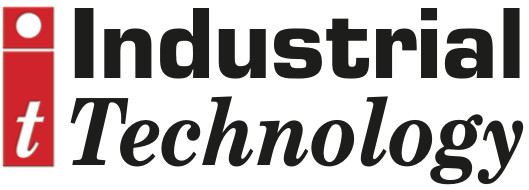
Posted to News on 21st Oct 2021, 00:00
Disruptive technologies to deal with disruption
Covid-19 has accelerated the need for, and the move towards, increased digitalisation across industry. Mike England, chief operating officer at RS Components, outlines some of the solutions and trends.

Covid-19 has impacted every aspect of our lives. Across industry, widespread factory closures and drastically restricted logistics globally, meant that downstream manufacturers soon found they had major supply chain disruptions. Many had to shift swiftly to using predominantly online sourcing and procurement services. Suppliers had to fast-track the introduction and/or expansion of their online sales and services. Transportation and logistics became a major challenge for everyone.
Employers encouraged their staff to work from home and needed to provide additional IT support while ensuring emotional wellbeing. Factory floor operations had to be adapted to protect factory staff. Solutions included personal protective equipment (PPE), split shifts, additional automation, and adjusting staff roles and responsibilities to match availability. And all of this had to be done fast, in order to address plummeting productivity, fulfil orders and try to recover some business momentum.
In essence, to tackle the challenges, virtually every aspect of our business, and throughout industry globally, required some form of additional digital, often disruptive technology. Clearly businesses that had embraced digital transformation were better positioned to adapt. Since the start, we have seen, and continue to see, a significant increase in B2B and B2C business, including eCommerce, not only from existing clients but also from new and occasional customers.
Minimising supply chain disruption
With a crisis as significant as Covid-19, having a reliable and secure supply chain that has the capacity to adapt quickly to ensure continuity is crucial – that quickly became very evident. Thankfully, at RS, we were in a position to respond quickly and decisively to the Covid-19 crisis which has enabled us in the main to provide continued support to customers worldwide. We initially prioritised health and allied services and those working on supplying critical and essential equipment and infrastructure.
Supply chain continuity was largely ensured, as our crisis management team was able to plan and act swiftly, shifting inventory around our global network of 14 distribution centres (DCs) to where it would be most needed. As a single point of service and support with a broad range of over 650,000 stocked electronic and industrial products and solutions, we were able to continue to satisfy customer needs. And when products were scarce, our experts were generally able to find alternate sources and equivalent parts via our vast and diverse range of suppliers.
The importance of having a strong digital, omni-channel offering that is easily expandable to support increased online sales has never been so prominent. At RS, through communication and collaboration, purchasing staff have been able to extend support for key customers in essential businesses. By encouraging a digital mindset, and connecting teams working remotely, while the DCs rapidly adjusted to operating with social distancing and appropriate PPE, our employees were inspired to go the extra mile.
Drivers of digital acceleration
Yet today, although industry, through investment in digital solutions, has largely overcome the urgent challenges generated by the pandemic, demand continues to rise. This digital acceleration trend was apparent pre-Covid-19 but has since intensified. Evidently, automation has been an ongoing trend in the process control and manufacturing arena for centuries. Now, combined with advanced IT (Industry 4.0), we are seeing it impacting not only all aspects of manufacturing, but also allied functions particularly in supply chain management, from purchasing and procurement, through inventory management to predictive maintenance.
The key drivers are changing customer expectations, the need for greater efficiency, and the realisation that data can be used to spot trends.
Our customers, and in turn, their customers, have high expectations of their suppliers, driven by experience from the consumer world. They expect first class service and transparency. Ease of use, AI-based personalisation tools, and our online real-time sales support have brought us repeat business. We have to be incredibly focused to manage these expectations, with the ability to deliver on a promise as well as being clear on how to respond if the unexpected happens.
Many businesses have suffered financially due to Covid-19 and this has increased the emphasis on improving efficiency. eProcurement is a key start point: the RS Indirect Procurement Report, which surveyed more than 1,300 Chartered Institute of Procurement and Supply (CIPS) members, highlighted that more than a third (34%) of UK companies are turning to eProcurement to increase efficiencies in this area, therefore demand is growing for tools that facilitate this.
At RS, the ConnectPoint a touch screen kiosk which can be installed on the factory floor, provides access to the RS catalogue, technical support and purchasing capability. Operating with RS ConnectPoint, RS PurchasingManager provides a complementary workflow and spend management system. Customers have found that ease-of-use and process streamlining have produced significant benefits, in particular cutting costs and increasing staff efficiency.
Inventory management solutions are a further key to improving efficiency and cutting costs, as the RS Indirect Procurement Report also revealed that 41 per cent of those surveyed cited the need to reduce inventory costs as an increasing business pressure. This has been exacerbated as companies have been increasing stockholding due to the pandemic or Brexit. RS offerings include RS VendStock and RS ScanStock as well as a fully outsourced inventory management service.
One of our customers, a major UK online supermarket, already with a strong digitally-led business, needed to increase the technology and automation elements of its smart warehouse to service its major customers more effectively. Workshops, tailored tool kits and an inventory management system with single SKU (stock keeping unit) references and BoM (bill of materials) were installed. It was the result of a truly consultative and collaborative approach between RS, the customer, and the suppliers to create and deliver a solution-led installation, which could be rolled out to future sites.
Big data
Meanwhile, companies have begun to realise the huge advantage of ‘big data’, facilitated by low cost and readily accessible cloud computing. The collection and analysis of data from all aspects of a business can be used with techniques such as AI, to predict market or business trends more easily, improve customer service, reduce downtime, and to adapt quickly when change is needed. Importantly, it can generate insights into production losses and component failure that can be avoided through pre-emptive maintenance.
Indeed, advanced predictive maintenance is tipped as a critical upcoming application. It combines many of the technologies that underpin Industry 4.0, such as cloud computing, networked sensors (IoT), big data, advanced analytics, and machine learning. Advanced predictive maintenance promises greater operational efficiency and reliability and improved productivity. Although still in its infancy, its appeal is the ability to access and control remote processes throughout the enterprise. Digital solutions that gather and analyse predictive data are going to be much in demand.
Be aware, however, that with any complex digitised system, whether a single device, sensor network or enterprise-wide installation, security is an issue. The greater the complexity, the more the weak points that can be exploited. There are best practices that can be employed to limit the risk, not least having an incident plan for when, not if, there is a security breach and working with trusted partners.
People power
One of the major causes of hesitation in the wider adoption of digital acceleration is the change it engenders in the workplace. The aim is to shift from manual to digital tasks, remove low-value repetitive jobs and improve employee productivity. Supporting people through this change requires a behavioural shift in re-educating employees right through the company.
The pandemic has demonstrated that dramatic changes in working practices, such as homeworking, can be made with positive results for all. The key is ‘test and learn’. Make evolutionary, small changes in a structured way. Work with the people to see that the change is achieving the required effect.
Prepared for the next crisis
The number of potentially disruptive events is growing: extreme weather, natural disasters, climate change, cyber-attacks, trade wars and geo-political events, such as Brexit. Uncertainty is a constant, and it is a matter of when, not if, we are impacted by the next major disruption.
Further investment in our digital infrastructure is enabling us to be even better prepared, to respond faster and more efficiently to changing needs as well as future crises and disruption. Data analytics tools are helping to predict market or business trends, and to enhance the customer experience. Expanded, more automated DCs will help improve our inventory management capability, logistics efficiency and employee safety. Our growing range of value-added solutions will help customers embrace digital acceleration and reap the benefits in the secure knowledge of working with a trusted partner.
For sure, digitalisation will cause disruption to processes, and major changes to culture and working practices. But Covid-19 has certainly provided us with a painful demonstration of how much greater the cost of disruption could be without it.






